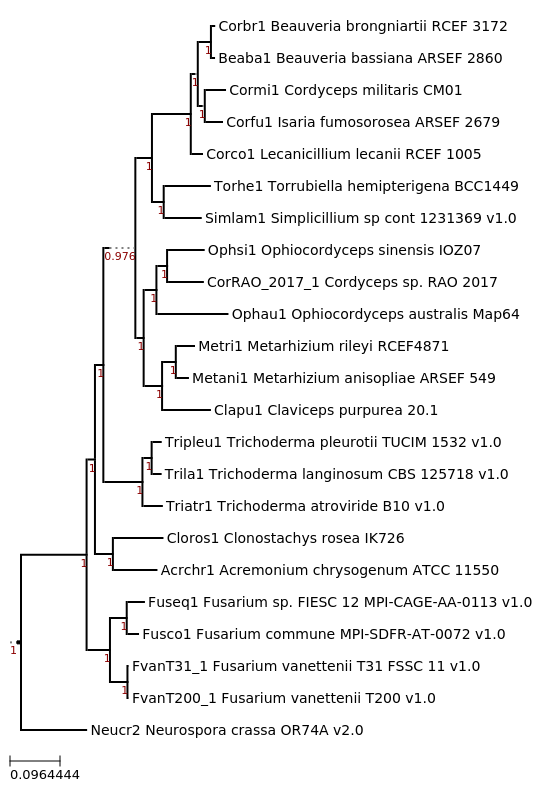
In the "1KFG: Deep Sequencing of Ecologically-relevant Dikarya"
project (CSP1974), we are sequencing keystone lineages of
plant-interacting fungi and saprophytic fungi that are of special
ecological importance for understanding terrestrial ecosystems. In
addition, comparative genome analysis with saprotrophic,
mycorrhizal and pathogenic fungi will provide new insights into the
specific and conserved adaptations associated with each fungal
lifestyle.
Simplicillium lamellicola
Simplicillium lamellicola was described as an anamorphic
parasite of cultivated Agaricus bisporus fruiting bodies
from England (Smith 1924). This species of mold belongs to the
Hypocreales (Sordariomycetes, Ascomycota). It has since been
reported from fruiting bodies of varied fungal species ranging from
rusts to polypores, but also from insects and nematodes (Gams and
Zare 2001, 2003). Distribution ranges from Indonesia to Scotland
(Gams and Zare 2003), and the species is apparently common.
The genome sequence is based on a lab contamination in Helsinki,
Finland. A dacrymycete culture was being grown for genome
extraction, but was partially overtaken by S. lamellicola.
The strain was not isolated and stored, so it did not survive.
Being a parasite of cultivated mushrooms, the genome of this
species may be of use in mitigating pest problems in mushroom
farms. Another possible use is as a biocontrol agent against
nematodes.
Researchers who wish to publish analyses using data from
unpublished CSP genomes are respectfully required to contact the PI
and JGI to avoid potential conflicts on data use and coordinate
other publications with the CSP master paper(s).
References:
- Gams W, Zare R (2001) A revision of Verticillium section Prostrata. IV. The genera Lecanicillium and Simplicillium gen. nov. Nova Hedwigia 73 (1-2):1-50
- Gams W, Zare R (2003) A taxonomic review of the clavicipitaceous anamorphs parasitizing nematodes and other microinvertebrates. In:White JFJ, Bacon CW, Hywel-Jones NL, Spatafora JW (eds) Clavicipitalean Fungi: Evolutionary Biology, Chemistry, Biocontrol And Cultural Impacts 1st edn. CRC Press, Boca Raton. doi:10.1201/9780203912706
- Smith FEV (1924) Three diseases of cultivated mushrooms. Transactions of the British Mycological Society 10 (1):81-85. doi:10.1016/S0007-1536(24)80007-4
